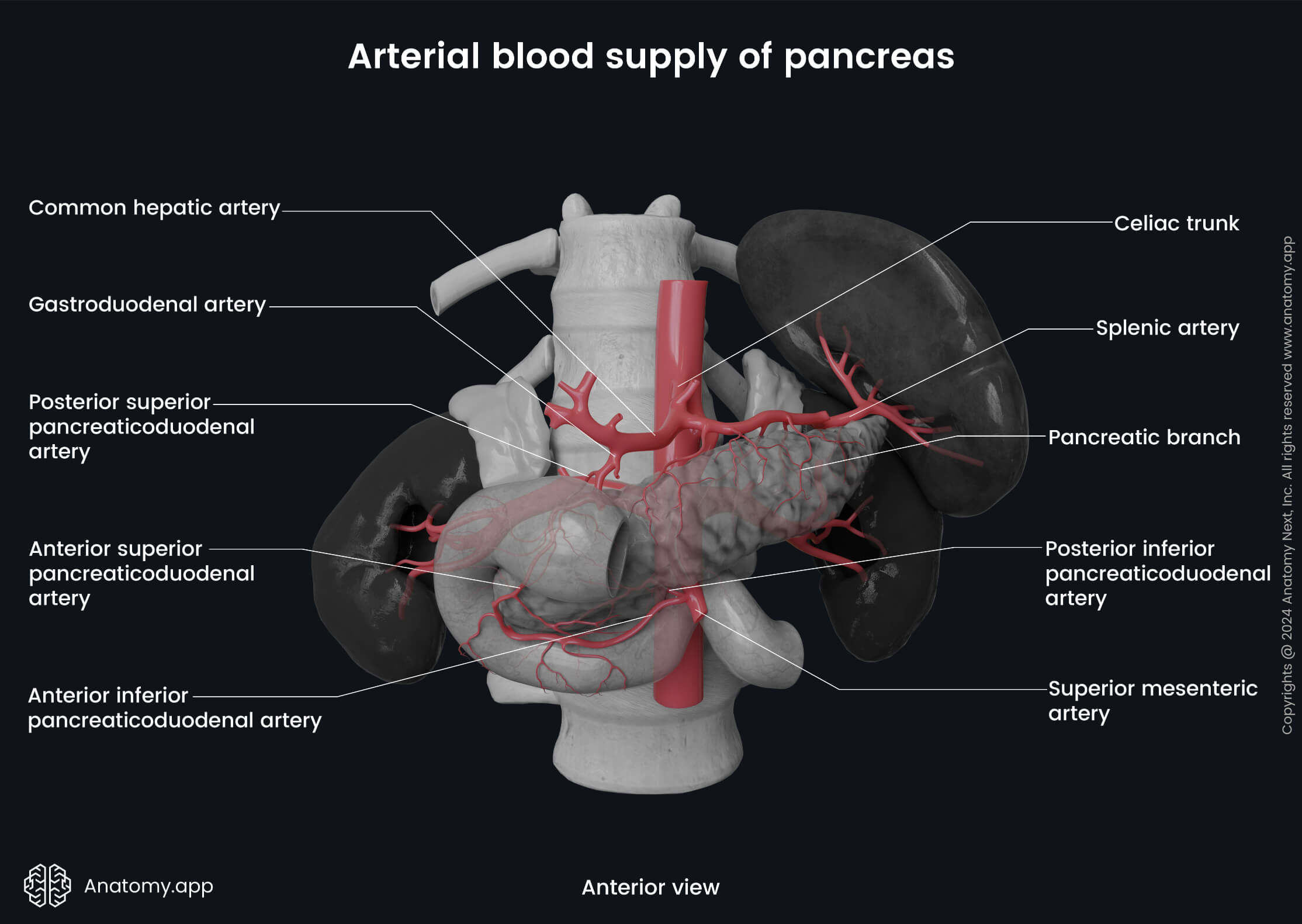- Anatomical terminology
- Skeletal system
- Joints
- Muscles
- Heart
- Blood vessels
- Blood vessels of systemic circulation
- Aorta
- Blood vessels of head and neck
- Blood vessels of upper limb
- Blood vessels of thorax
- Blood vessels of abdomen
- Blood vessels of pelvis and lower limb
- Blood vessels of systemic circulation
- Lymphatic system
- Nervous system
- Respiratory system
- Digestive system
- Urinary system
- Female reproductive system
- Male reproductive system
- Endocrine glands
- Eye
- Ear
Inferior pancreaticoduodenal artery
The inferior pancreaticoduodenal artery (Latin: arteria pancreaticoduodenalis inferior) is a blood vessel that typically branches off the superior mesenteric artery and participates in supplying the pancreas and duodenum. It may also arise from the first jejunal artery - the first jejunal branch of the superior mesenteric artery. Immediately after arising, the inferior pancreaticoduodenal artery divides into two branches - anterior and posterior.

The two branches of the inferior pancreaticoduodenal artery run between the head of the pancreas and the duodenum. The anterior branch ascends to the anterior side, while the posterior branch - to the posterior side of the head of the pancreas. Superiorly, the anterior and posterior branches anastomose with branches of the superior pancreaticoduodenal artery, a branch of the gastroduodenal artery. These anastomoses create an arterial network that supplies the head and uncinate process of the pancreas, as well as the duodenum.
